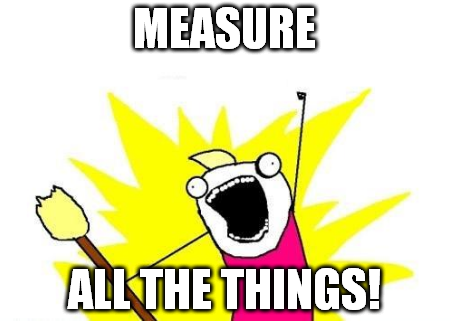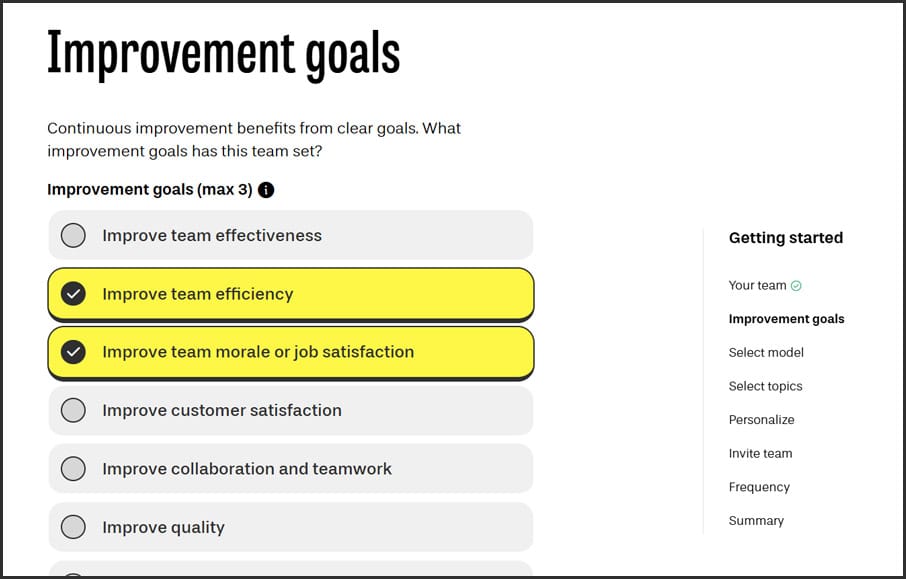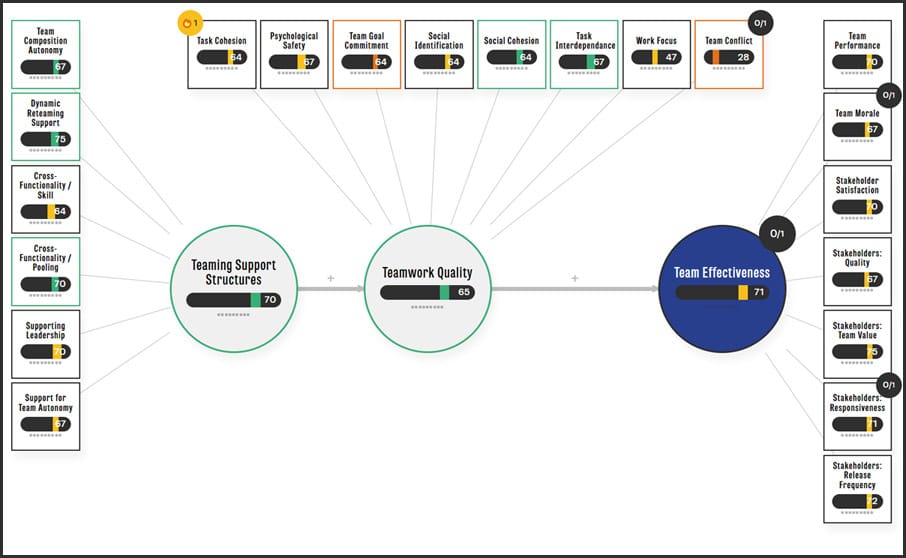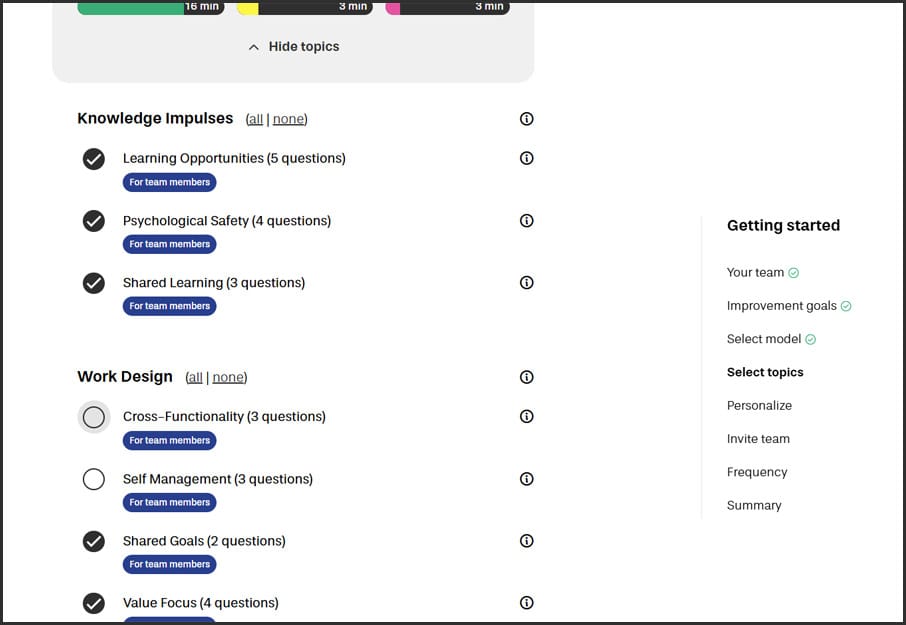Why You Shouldn't "Measure All The Things"

With Columinity, you can measure over 50 different factors in and around teams across 3 scientific models, ranging from team conflict to social cohesion and from release frequency to value focus. That provides a ton of potential insights, and it is only natural that it leads some users to wonder, "Why can't I measure all 50 factors at once for my team?". This is because Columinity requires you to first select one of three models, and this limits what you can measure. In this pos,t we explain why this is a good thing.
"Measure All The Things!"
When it comes to metrics, a common pitfall is to "measure all the things". It is tempting to construct expansive dashboards with dozens, even hundreds of metrics (we've done this too in the past). Typically, the underlying assumption is that "more data equals more actionable insights". But this is rarely the case. And it is easy to understand why.
Data is just a bunch of numbers. To translate that into actionable insights, data must be transformed into information through active interpretation. This involves asking questions like:
- What does it mean that this metric's value is X?
- When is the value for a metric too high or too low?
- Is the value of the metric currently cause for concern?
- Aside from an underlying real issue, what else could've caused the metric to be what it is?
Understandably, the more data you have, the more effort it will take to interpret. And this easily becomes overwhelming with dozens, let alone hundreds, of metrics. This teaches us to be economical with what we measure. While measuring everything we possibly can might be tempting, less is more in this case.

Start With The Purpose
To avoid falling into the "Measure All The Things"-trap, it is a good idea to begin with a clear purpose. This requires clarifying why you want to measure certain things and how you plan to do so,. This involves asking yourself questions like:
- What is the greatest challenge for this team, group of teams or organization?
- Which measures relate to that challenge most clearly?
- Which of those measures are most likely to change when things improve?
By answering these questions, it becomes clearer what kind of metrics actually make sense to measure.
Sign up for our newsletters to stay up-to-date with product and research updates.
Example: Measuring Your Agile Transformation
A clear example will bring this message home. Suppose that your organization is embarking on a change program to increase overall agility and responsiveness to changes in its environment, the marketplace, and customer needs.
Of the hundreds of factors that could be measured, a few seem most relevant:
- How satisfied are customers throughout this process with the responsiveness, collaboration, and quality of those they interact with in the organization? Is it improving as our change program continues?
- What is the morale among teams as the change program influences how work is performed?
- To what extent do teams feel supported by management in this change program?
- Is overall responsiveness increasing, as reflected in release frequency, cycle time, and other metrics?
- Is quality at least not negatively impacted by the desire to respond faster?
- How is this affecting the commercial baseline of the company?
In Columinity, factors like Team Morale, Stakeholder Satisfaction, Responsiveness and Management Support are likely most relevant throughout the program. And you may want to include metrics from other sources too (i.e. financial, technical, flow-related).
How Columinity Helps
Before you measure, it is essential to consider what you need and want to measure. Columinity helps you in several ways here.
First, Columinity helps you by considering your improvement goals before you choose what to measure. This is a great way to evaluate your primary challenge(s) and narrow the scope of what should be measured. Columinity uses this selection, along with some team characteristics, to recommend one of three models.

Second, Columinity offers three scientific models which provide different, but overlapping, perspectives on teams. The models identify factors that clearly contribute to team effectiveness based on scientific evidence and data from real teams.
We describe these models in detail in this post. In short, the Agile Team Effectiveness model is most suitable for teams that want to become more responsive and focused on delivering stakeholder value, thereby increasing their effectiveness. The Teamwork Quality model is ideal for team building and creating the foundations that enable people to become effective teams that collaborate on shared goals. The Agile Mindset model helps evaluate whether teams understand the need for continuous learning and agility, and whether they are sufficiently supported to achieve this.

Third, Columinity cleverly reuses data from those factors that overlap between models. So if you scan your team with the Teamwork Quality model in January, and data from overlapping factors will be available for historical comparison, if you scan your teams with the Agile Team Effectiveness model in February. For example, both models measure Cross-functionality, Team Morale, and various dimensions of stakeholder satisfaction.

Finally, Columinity encourages you to perform smaller scans frequently over large scans infrequently. Each small scan can focus on a subset of factors that are most relevant to your improvement actions at that moment in time, but all are building toward a strong baseline for future measurements. Whenever you set up a scan, you have the option to choose a preset selection of factors or entirely customize the factors you want to measure (from the selected model). For example, you could measure critical factors every few weeks, while less critical ones are measured every few months.

Conclusion
Platforms like Columinity can make it tempting to measure everything we possibly can. However, data does not equal information, and it requires considerable effort and time to transform data into valuable, actionable insights. Thus, it is better to be economical with what we want to measure. This requires that we always start with a clear purpose. Columinity helps you with this through its design, features, and philosophy.
Set up your first scan now and start improving on a challenge today

